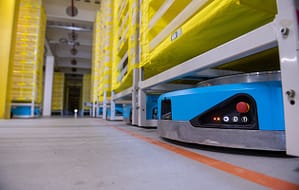Fabric buildings have emerged as a versatile and cost-effective solution for commercial and industrial applications. Their durability, flexibility, and quick installation make them ideal for numerous applications. These structures withstand harsh weather conditions while offering energy efficiency and low maintenance.
From warehouses to sports facilities, fabric buildings provide a practical alternative to traditional construction. Below, we explore ten key commercial and industrial applications where these structures excel.
1. Warehousing and storage facilities
Fabric buildings serve as excellent warehousing and storage solutions due to their spacious interiors and customizable designs. These pre-engineered structures can be tailored to accommodate large inventories, machinery, or raw materials. The natural light transmission of fabric roofs reduces electricity costs, while their robust frames ensure protection against extreme weather.
Additionally, fabric warehouses can be quickly erected, allowing businesses to expand storage capacity without lengthy construction delays. These structures are suitable for industries ranging from agriculture to retail logistics.
2. Agricultural storage and livestock shelters
Farmers and agricultural businesses benefit from fabric buildings as they provide cost-effective storage for hay, grain, and equipment. These structures also serve as ideal livestock shelters, offering well-ventilated and temperature-regulated environments for animals.
The fabric material allows diffused sunlight, reducing heat stress while maintaining a comfortable atmosphere. Compared to traditional barns, fabric agricultural buildings are easier to maintain and more cost-effective, making them a practical choice for modern farming operations.
3. Manufacturing and assembly plants
Manufacturers require large, open spaces for production lines and assembly operations. Fabric buildings provide column-free interiors, allowing for efficient machinery placement and workflow optimization. The durable fabric membranes resist corrosion, making them suitable for industries dealing with chemicals or heavy machinery.
Furthermore, these structures can be insulated to maintain consistent temperatures, ensuring worker comfort and product quality. Their quick deployment also helps businesses scale operations without significant downtime.
4. Aviation hangars and aircraft storage
Fabric structures are widely used in the aviation industry for aircraft storage and maintenance hangars. Their wide-span designs accommodate large planes while offering protection from UV rays, moisture, and debris.
The lightweight yet sturdy framework ensures structural integrity without requiring heavy foundations. Many military and private aviation operators prefer fabric hangars for their rapid installation and lower construction costs compared to steel or concrete alternatives.
5. Retail and temporary commercial spaces
Pop-up shops, seasonal markets, and temporary retail outlets benefit from the flexibility of fabric buildings. These structures can be customized with branding, lighting, and climate control to create an inviting shopping environment.
Since they are easy to assemble and disassemble, businesses can relocate or expand with minimal effort. Fabric retail spaces are also a cost-effective solution for businesses testing new markets without committing to long-term leases.
6. Sports and recreation facilities
Fabric structures are ideal for sports complexes, indoor arenas, and recreational centers. Their high ceilings and open layouts accommodate courts, tracks, and spectator seating.
The translucent fabric allows natural lighting, enhancing visibility while reducing energy consumption. Many schools, municipalities, and private sports clubs use these buildings for year-round training and events, avoiding weather-related cancellations.
7. Emergency and disaster relief shelters
In disaster-prone areas, fabric buildings serve as quick-to-deploy emergency shelters, medical centers, and storage units for relief supplies. Their portability and rapid installation make them invaluable in crisis situations.
These structures are also resistant to wind, snow, and rain, ensuring safety for displaced individuals. Governments and humanitarian organizations increasingly rely on fabric shelters for efficient disaster response.
8. Mining and remote site operations
Mining companies and remote industrial operations use fabric buildings for equipment storage, workshops, and worker accommodations. Their durability withstands harsh environments, while their modular design allows for easy relocation as operations shift. Insulated fabric structures also provide comfortable living and working conditions in extreme climates, improving productivity and worker morale.
9. Event venues and exhibition halls
Fabric buildings are popular for hosting trade shows, concerts, and exhibitions due to their expansive, unobstructed interiors. The aesthetic appeal of tension fabric structures enhances event branding, while their quick setup meets tight deadlines. Event organizers appreciate their adaptability, as they can be expanded or reconfigured based on attendance needs.
10. Military and defense applications
Military forces utilize fabric structures for mobile command centers, storage depots, and barracks. Their rapid deployment and resistance to environmental factors make them ideal for field operations. These buildings also provide secure, temporary housing for troops in training or active missions, ensuring operational readiness.
11. Automotive and vehicle storage
Fabric buildings are widely used for vehicle storage, including cars, trucks, buses, and RVs. Dealerships, rental companies, and fleet operators benefit from the large, open spans that provide ample space without obstructive columns.
The UV-resistant fabric protects vehicles from sun damage, while proper ventilation prevents moisture buildup. These structures are also used as repair garages and maintenance bays, offering a cost-effective alternative to traditional steel buildings.
12. Energy sector and utility enclosures
In the energy industry, fabric buildings serve as enclosures for equipment storage, power stations, and renewable energy installations. Oil and gas operations use them to shelter drilling equipment, while solar and wind farms utilize fabric structures for maintenance hubs and component storage.
13. Waste management and recycling facilities
Fabric buildings provide an ideal solution for waste management, recycling centers, and composting operations. Their large, open designs accommodate heavy machinery like compactors, balers, and sorting lines while protecting materials from weather damage.
The natural light transmission reduces lighting costs, and the durable fabric resists odors, moisture, and chemical exposure. Municipalities and private waste companies use these structures to create efficient, enclosed processing areas without the high costs of traditional construction.
14. Cold storage and refrigerated warehousing
Insulated fabric buildings are increasingly used for temperature-controlled storage, particularly in the pharmaceutical and food industries. With proper insulation and HVAC integration, these structures maintain consistent temperatures for perishable goods while offering energy-efficient operation.
The quick construction time allows businesses to rapidly expand cold storage capacity during peak seasons, such as harvest periods or holiday demand surges. Compared to conventional refrigerated warehouses, fabric-based cold storage is more affordable and adaptable to changing needs.
Bottom line
Fabric buildings offer a versatile, cost-efficient, and durable solution for a vast range of commercial and industrial applications. From warehousing and agriculture to emergency shelters and military use, their adaptability meets diverse needs with minimal construction time and expense. As industries continue to seek sustainable and scalable infrastructure, fabric structures will remain a preferred choice for modern businesses and organizations.






Leave a Comment